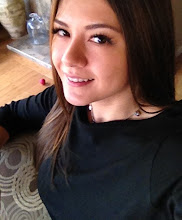The Yamas are the first Limb of Patanjali’s 8 Limbs of Yoga or 8 Paths to Enlightenment.
And though Patanjali meant for the 8 Limbs to be followed in order, most people don’t come to Yoga and begin with the first or second Limb but rather with the third Limb (Asana practice) since it’s the most accessible.
The Yamas and Niyamas are essentially the Don’ts and Dos of Yoga. Not many people are receptive to learning when they’re immediately told what they can’t do and what they need to do. But the practice of postures (i.e., exercise) is something everyone can understand. So most people are draw to this third limb.
They may then be interested in Pranayama since breathing correctly or learning to control one’s breath can help their Asana practice. Then they learn about meditation for the same reason. And at this point, they may be interested invested enough to want to learn about the wider concept of Yoga.
The Yamas and the Niyamas deal with our interaction with others and how we internally handle situations.
We’ll be looking at the Yamas today.
The Yamas are the “Restraints” or “Don’ts” of Yoga. In other words they are precepts of social behaviour; how you treat others and the world around you.
The Yamas include
• Ahimsa (non-violence)
• Satya (truthfulness)
• Asteya (non-stealing)
• Brahmacharya (continence)
• Aparigraha (non-greed)
Lets look a little deeper.
Ahimsa
The idea behind Ahimsa is to cause no harm to any living creature in thought or dead. This does not mean that we all must be vegetarians or that we cannot defend ourselves. But rather that we should always behave with consideration to others. If we consider how our actions affect others we’re likely to make more correct choices when we arrive at crossroads.
Satya
Satya is simple: be honest. But this does not mean you should be needlessly blunt or cruel. Consider what you have to say, how to say it, and how it’s going to affect others. If you think it’s going violate Ahimsa, then try to avoid the situation. Satya should never come into conflict with Ahimsa.
Asteya
Non-stealing applies to material objects as well as intangibles. For example, always trying to be the center of attention is a form of an intangible theft. And if you’re causing a distraction in a classroom or other learning environment you’re preventing the learning of others. Another form of intangible theft. And if someone confides in you, do not take advantage of that person.
Brahmacharya
While at one time, this may have meant the idea of celibacy, in the modern world, Yogis and Yoginis interpret this to mean avoidance of meaningless sexual encounters.
Krishnamacharya who evangelized Yoga as we know it today, was married and fathered children.
Aparigraha
Avoid hoarding and collecting. Make life about simplicity and give freely.
If we take more than what we have earned, we are exploiting someone else.
I hope that this has helped to shed a little more light on the Yamas. And if you have a good example of one of the Yamas, please share them. I love to hear different examples and real life applications as they often lead to a deeper understanding of something we already think we “know”.
Namaste.

